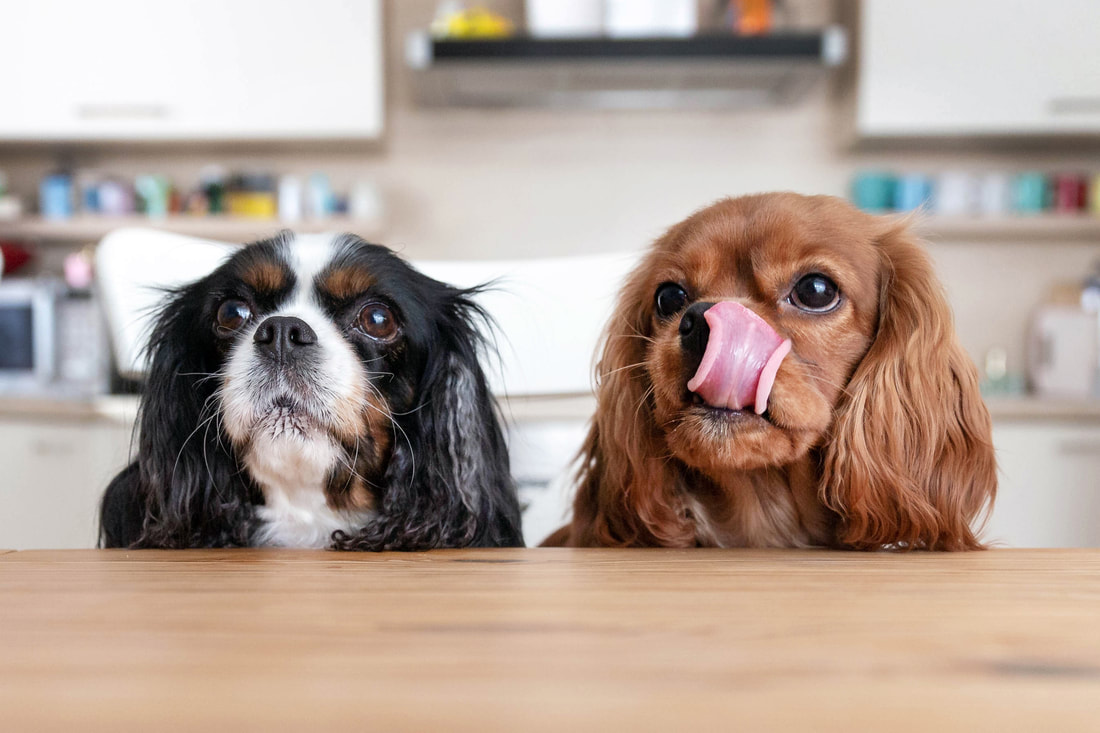 If you're having trouble with crate training, dealing with an overactive pup, or simply trying to alleviate puppy boredom, this blog post is a must-read! Keeping dogs mentally stimulated is a key to their overall well-being and trainability, and making them work for food is an easy way to provide this stimulation! By replacing the traditional food bowl and introducing food dispensing toys, you can give your puppy a fun and engaging challenge. This approach is especially helpful for fast eaters, puppies with separation anxiety, and those who need in-crate entertainment. Oh, and these are fantastic for retreating to your room in peace for a long enough period of time if you haven't had any "intimate time" since getting your dog… (sorry, it had to be mentioned). EASY AMUSEMENT: SNUFFLE MATS & SLOW FEEDERS Snuffle mats are common tools used by breeders to facilitate weaning and playtime for puppies. Work up to serving a full dinner by beginning by concealing some top-value treats in this mat. High-quality kibble can be placed on the mat to limit your dog's eating, keep them occupied in a crate or pen and teach your puppy or dog to hunt for food. The majority of LierChonPoo dogs & puppies have experienced one of these possibilities: Small Snuffle Mat: This mat is portable and reasonably priced. Both puppies and adults can use it. Medium Snuffle and Play Mat: We adore this medium mat since it has several areas to hide meals and treats for larger breeds, households with multiple little dogs, or an entire litter. We also appreciate the simple washing and suggest doing so once a week. Slow feeders: Although similar to snuffle mats, slow feeders are intended to slow down a rapid eater and do not provide the same stimulation level. You can maximize the slow feeder's fun value by combining your kibble with top-quality wet food that takes a lot longer to consume when distributed on the feeder's walls. LEVEL 2: SNOOPS Snoops are marketed as an interactive treat dispensers, but we frequently use them as bowls to feed & occupy puppies by filling them with a combination of kibble and other food. Due to their simpler manipulation by the puppy, we start snoops before feeding in Kongs. You can buy the smiley face insert to make it more challenging, but we've found it's simpler to stuff food and bulkier parts into the hole to increase the difficulty. To introduce these, we will combine a little kibble with a few high-value treats. Once the dog is familiar, we'll switch out the rewards for chunkier bits of cooked chicken or jerky that are harder to get to. The difficulty can be raised by filling the Hole in the bottom with treats or kibble or adding items like peanut butter or plain yogurt inside. We appreciate that Snoops are covered in mint oil to help keep breath fresh and that they can be put in the dishwasher on the top rack. Our young dogs will play with these for twenty to thirty minutes, providing us with times as we tidy up around them, run errands, etc. Level 3: KONGS Possibly the Kong is the most well-liked "work for food" toy available. In order to keep pups clean & stuff, you should start them off with the little binkie Kong and purchase the multi-pack. Go up to the medium as your puppy develops and matures (or to feed complete meals). We have written a full blog post HERE about stuffing the Kong from the simplest to the most complex. We will reiterate that the Kong is an excellent tool for rewarding and entertaining puppies in crates, as well as for making them work for their food. Level 4: PUZZLES & INTERACTIVE TOYS It is uncommon for us to serve an entire meal in one of theses toys or puzzles, but it is possible if you give your dog a high-calorie kibble like PawTree. Although our dogs love the Bob-A-Lot Interactive Dog Toy & the Tug-A-Jug, we utilize them sparingly because they can be challenging to clean and are truly only appropriate for kibble or treats. Depending on how the dog learns to give the treats, they may also be noisy. Again, if you use these frequently, ensure you only use top-quality treats with one component and account for these calories to prevent your puppy or dog from becoming overweight. Puzzle Toys are entertaining as well, but with certain cautions. With these kinds of toys, you MUST watch over dogs & puppies because the majority of them feature bits that, if handled carelessly, can be chewed and even eaten. They can be challenging to clean as well. Lick Mats: Our pups and dogs also love these well-liked lick mats. Typically, we only use these on occasions when we want to treat and amuse the dogs for a while. If you're going to use these mats effectively, you must discover a mixture to distribute on the mat that is nutritious and tempting to your dog. Various ideas are covered in the Kong stuffing section also apply here. For our dogs, we take it a step further and store these fully prepared in the freezer: natural peanut butter combined with plain greek yogurt, pureed pumpkin mixed with peanut butter or yogurt, Ollie dog food spread & re-frozen, or Ollie mixed with yogurt. We hope you found this post helpful and will let us know what is effective and what doesn't. Remember that any toy or bowl that doesn't support your pet's entertainment can be donated to your neighborhood shelter for a needy dog, so trying new things is never a waste. Please also check out our post on keeping your pup occupied!
0 Comments
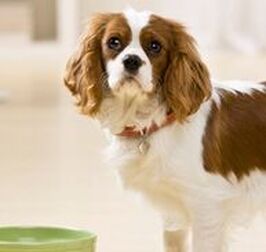 Many puppy owners complain that their dog is a fussy eater, but more often than not, we've discovered that the owner may be half (or more) of the problem). If owners are not careful, they may find themselves physically feeding their dog fillet mignon from their hands without even realizing what is going on. A finicky eater is incredibly simple to produce if you're not attentive. Try these suggestions before you categorize your dog or puppy as a finicky eater:
Now that we've discussed some of the causes of lack of appetite, here are the steps you should take (in order) before giving your dog treats, changing food or hand feeding:
I have volunteered in our community shelters for 30+ years, and during that time, I have never encountered a picky eater or a canine that starved themselves to death. Try not to worry or become fixated on your dog's feeding patterns. Take these steps and consult with your vet to create a feeding routine for them that doesn't involve them actually eating out of your hand 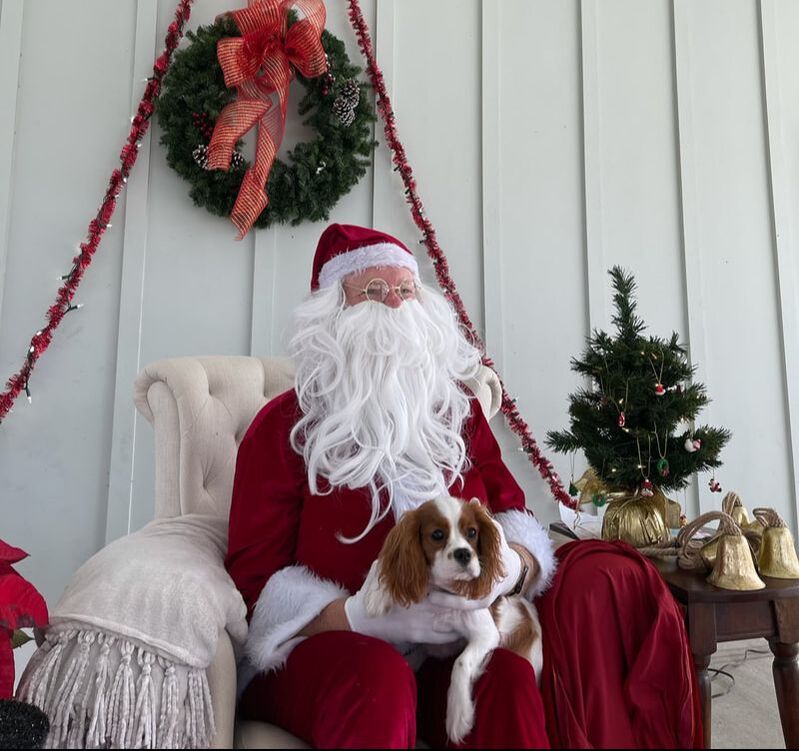 You're in luck if you're looking for a gift for a Cavalier owner or lover! Procrastinators everywhere are searching for last-minute gifts that will arrive by Christmas. Here are our recommendations that will always be on time and appreciated by any CKCS lover:
While Amazon is the most convenient option for last-minute gifts, don't forget to take into account Shutterfly or Etsy, where you can support small businesses and purchase handmade items like ornaments and totes featuring a variety of Cavalier's while also temporarily personalizing something with a photo of your own Cavalier (we love their mouse pads). Any of these choices will undoubtedly make your Cavalier lover grin this Christmas. 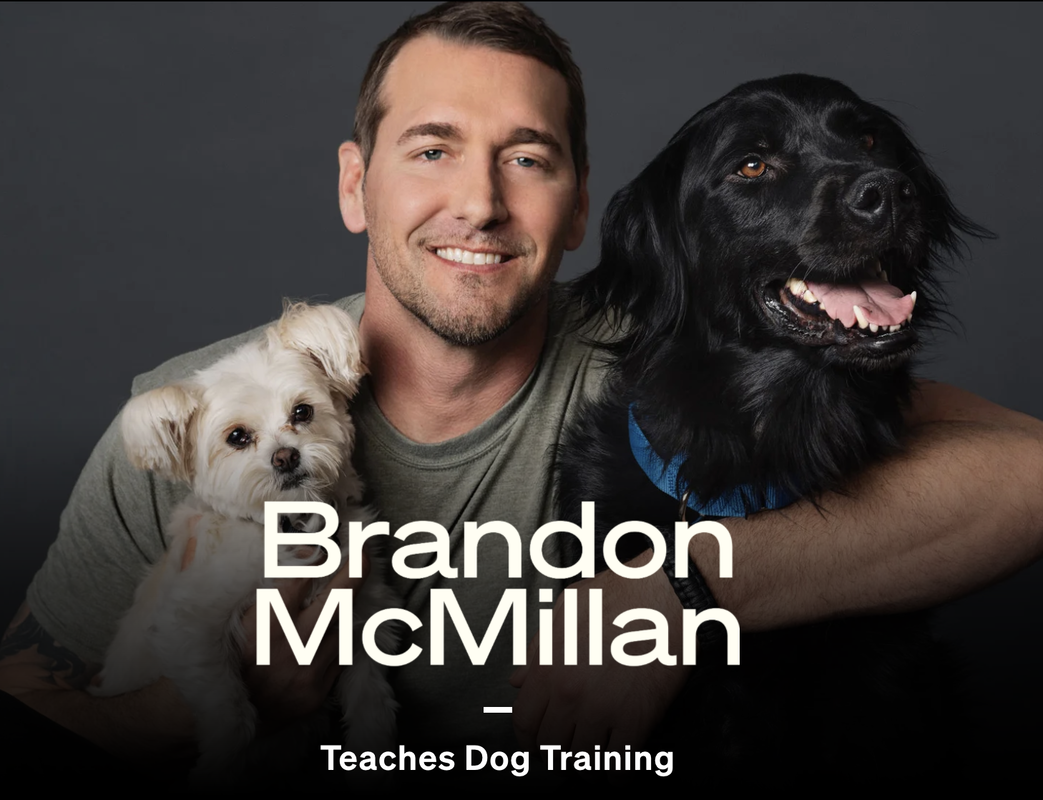 We were thrilled to discover that Brandon - star of the show Lucky Dog and author of Lucky Dog Sessions: Train Your Pooches in 7 Days, now teaches his own dog-training class on MasterClass. If you're unaware of MasterClass, it's a fantastic service where you can take courses on various subjects. Serena Williams taught us how to play tennis, and Gordon Ramsey taught us how to cook. Both classes were excellent, but the opportunity to witness Brandon McMillan teach his dogs LIVE was fantastic. Brandon explains his straightforward and efficient training method to help you build confidence and control with your dog in fifteen video lessons that last about three hours together. MasterClass has a 30-day money-back policy and charges $15 per month. We simply can't suggest this enough for all new puppy owners wondering how to raise the ideal companion. If you decide to give it a shot, we'd love to hear your thoughts. A neighborhood family on Daniel Island just adopted one of our lovely rescue dogs. A few days later, we discovered that Meg Swayze, a very talented member of the guardian family, painted this wonderful handmade canvas of Archie. We needed to know more.
It was a pleasant surprise to discover that Meg runs an Etsy studio called Swayze Studio, where she would paint a portrait of your pet on canvas for as little as $125. We've come across digital art at that price, but never before have we met a real artist who puts so much effort into capturing the adorable expressions of our cherished furry family members! 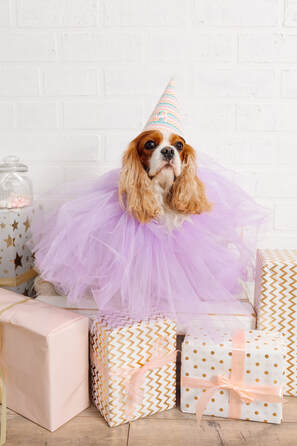 We advise our Guardian Homes & owners NOT to post requests for dog-feeding advice on Facebook. Most of the people you'll find on forums aren't veterinary experts; they frequently suggest low-rated diets just because someone else did and they do not thoroughly investigate animal nutrition. This post will provide insights into the food we feed our dogs and the options we suggest to our clients, such as kibble, fresh, and raw diets. Although we do not discuss the diets available at many veterinary offices, we advise you to also look into those alternatives. We advise using Dog Food Advisor to look up any food before trying it. You might be shocked by what you learn about some of the most popular and pricey brands that veterinarians recommend. For us to suggest a food, it must have a rating of 4.5 or above, have at least 30% protein, and be mostly composed of real meat. Oh, and our dogs have to love it! We are extremely cautious and selective about what we feed our dogs, but please keep in mind that we are not veterinarians. We discuss this with our vets. We converse with other breeders. We examine labels. We research dog food. We are aware that appropriate nutrition is the cornerstone of healthy animals when breeding dogs, and we have observed firsthand which products are most effective with Cavaliers. Also, we are aware that every dog and its owner are unique. As long as people are doing their best for their dogs, we don't judge their feeding choices. We advise owners to consider the following options. KIBBLE - Although kibble only makes up a small portion of our dog's diet, the majority of owners prefer to use it as their dog's main source of nourishment. We advise you to add home-cooked and/or raw foods to your dog's diet if possible. It's crucial to pick the best kibble you can buy if you only want to feed kibble. Due to recalls, poor nutritional content, and low-quality proteins, kibble frequently has a bad rap, yet certain varieties are better than others. Depending on where you choose to purchase, these are our recommendations: OPTIONS ON PAWTREE: We were requested by PawTree to sample their kibble on our dogs and have had a positive experience with this brand. We have discovered that their claims—reduced food, lesser poop, and healthier dogs—are accurate, and our dogs love their products. We alternate feeding formulae such as Salmon & Sweet Potato, Chicken & Oatmeal, and Whitefish & Brown Rice. We really adore their superfood seasonings and raw treats (for that selective eater in the pack). Free shipping is available on these products when you sign up for their PawClub and create an EZ-Ship! OPTIONS ON CHEWY.COM 1. Instinct Original Small Breed Dog Food (Grain Free) - This grain-free choice contains chicken, chickpeas, chicken meal, & tapioca among its first five components. Only dogs who need a grain-free choice should use this, in our opinion. Comprises 39 percent protein. 2. Diamond Naturals Small Breed - This grain-free option contains the following as its first four ingredients: chicken, cracked pearled barley, chicken meal & ground white rice. Protein makes up about 30% of it. OPTIONS ON AMAZON.COM 1. Nulo Freestyle Small Breed (Grain Free) - This grain-free choice has a salmon meal, deboned salmon, turkey meal, menhaden fish meal, and salmon meal as its first four ingredients. This recipe contains chicken; therefore, dogs with chicken allergies should avoid it. 34% of this kibble is protein. 2. Wellness Complete Health Small Breed - Salmon meal, chicken meal & oats make up the first four elements of the grain-free Small Breed option. Protein may be found in this food. 31% of this kibble is protein. HOME COOKED - Numerous new dog owners are unclear about the distinction between "home-cooked," which simply entails making your dog's food at home from ingredients like vegetables and carbs, and "raw feeding," which is based on food that is not cooked. It's simple to get confused. For instance, we'll include a recipe for puppy loaf (below) that may be consumed raw or cooked and hence fits into both categories. Although we do provide home-cooked meals for our dogs, we also learn from our owners that preparing meals that are truly nutritionally balanced may be time-consuming, more expensive, and stressful (to ensure that your dog receives all the necessary nutrients). Some of our favorite recipes may be found on Food.com and Damn Delicious. We frequently supplement our dogs' usual food with grilled, dried chicken or boiled eggs. Fortunately, today's dogs can access "home-cooked" meals delivered to your house. Many cost less than you may think. Currently, our dogs ADORE Ollie. This is a fantastic solution for dogs with allergies that require a diet with few ingredients. RAW FEEDING - This is a contentious and hot topic. Many supporters of raw feeding believe that anything other than raw is not acceptable. Meanwhile, novice dog owners find raw feeding to be difficult, time-consuming, and frequently contrary to their veterinarian's advice. We advise you to contact Dt. Judy Morgan, if you're interested in raw feeding a Cavalier or a Cavalier-hybrid. Her puppy loaf recipe is an excellent way to start with raw feeding. Using freeze-dried & frozen raw foods, which are sold by stores and at your neighborhood specialty dog food store, is another excellent way to get started with raw nutrition. When we travel, we rely on freeze-dried raw food; we also wish to supplement with it and carefully introduce raw to a new dog. These products offer raw advantages without requiring you to grind, cut, measure, or mix the ingredients yourself! Here are some ideas to get you started with feeding your dogs raw meat: OPTIONS ON CHEWY.COM 1. Primal Raw Freeze-Dried Dog Food - This brand has a wide variety of tastes and is simple to prepare. To serve, simply rehydrate the nuggets with water or bone broth. 2. Instinct Frozen Raw Bites (Grain Free Options) - Also offered in patties. Another reliable company that offers a wide range of tastes. This alternative is grain-free and has 85% meat & organs. They must be thawed before serving if they are frozen, but they do so fast. Options ON AMAZON.COM: Please take note that we don't buy frozen goods from Amazon. Thus this just refers to their freeze-dried options. 1. Stella and Chewy's Freeze-Dried Raw Dinner Patties - We have found that not all flavors of the brand we use for travel are of the same quality, so we advise choosing Chicken, Venison Blend, or Rabbit if possible. 2. Vital Essentials Beef Entree Mini Nibs Grain-Free Freeze-Dried Dog Food - This excellent beef-only, the grain-free choice is fantastic (If your dog is sensitive to chicken). We do not advise using this as your dog's primary food source. Finally, let's reiterate that diet is crucial to your dog's health. Try a few different items to watch how their coat, skin & energy vary. And don't be afraid to experiment. Depending on your dog, schedule, and spending capacity, dog food is ultimately a matter of personal preference. Never surrender that decision to a stranger who has little to no understanding of any of those elements, and always bring up any nutritional concerns with your veterinarian first.  KoKo the Cavalier - not happy being photographed in her diaper! KoKo the Cavalier - not happy being photographed in her diaper! In the past, almost all dogs that weren't going to be bred were neutered or spayed at a young age. Because of this trend, only breeders had to deal with the issues of heat cycles. That has changed recently, though, as numerous studies have demonstrated that waiting until your dog is fully sexually mature before having her spayed or him neutered may be preferable. As a result, we get lots of questions about how to manage a dog's first heat. Here are some ideas and items to help you make it through your girl's first heat.
IDENTIFY THE STAGES- Males may be more drawn to females when they are in heat, but females only want to mate for a brief period. Keep your female isolated from any intact males during her entire cycle. About nine days after she starts bleeding, your dog usually becomes fertile (but again, this varies). She is still fertile for a few days, even after the bleeding has ended. Before thinking the situation is safe, wait until her vulva shrinks to its pre-heat size. SHOP FOR YOUR SUPPLIES - Not all of these items are necessary. When making purchases, consider how many heat cycles your female will experience.
PERSONAL TIPS - Final thoughts on your dog's first heat that we would like to share with our Guardian Homes and Owners are as follows:
We hope you make it through her first heat cycle with ease. We assure you that there is nothing to worry about if you are prepared. Please comment if you have any extra ideas or products you'd like to see in this post. Also, don't forget to follow us on Facebook for additional helpful advice on Cavaliers, 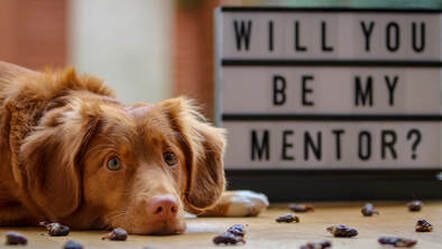 Looking for a breeder to assist you with the certifications, testing, natural mating, whelping process, and finding good homes for the puppies. We would love to help. And before posting on FB or other social media platforms, please read below as to what you might get instead: About once per week, a kind-hearted dog lover will upload a photo of their adorable and cherished pet to an online community and declare their intention to breed the animal, but confess they lack the knowledge regarding how to do so. They receive criticism from other breeders or "adopt, don't shop" proponents within minutes, telling them to give up on their goal of breeding their canine and using abbreviations like DNA, OFA, and AI without providing any context. These comments are well-intentioned - the majority of reputable breeders and animal advocates detest nothing more than reading posts on social media about sick dogs sold by bad breeding practices and so-called "backyard breeders." They want people to know that breeding is much more complicated and costly than most people think. Nevertheless, every breeder started somewhere, and as a member of the SPCA Board and a supporter of the organization, I've come to understand that if breeders stigmatize or discourage anyone else who has an interest in breeding, we are essentially ensuring that the very thing we are trying to stop will occur—namely, that individuals will proceed without the knowledge and tools they require. Because of this, I advise anyone thinking about breeding their canine to find a knowledgeable breeding mentor. I'm delighted to spend my time and efforts helping those interested in breeding or attempting to launch a program involving Cavaliers. Others interested in learning more about these breeds are not my rivals; I view them as allies in the mission to advance these breeds and ensure healthy bloodlines. When I first began breeding, I had two mentors, and I feel I have to return their kindness by being helpful to others. If you want to breed your dog, kindly consider hiring a breeding mentor to guide you. Before contacting a prospective mentor, be ready to respond to the following inquiries:
Before attempting to breed your dog, you should try to correct any issues that the answers to any of these queries indicate. It's time to look for a mentor if you can say "yes" to each of these queries. Look for these things when choosing a mentor:
Invest some time in the following (if your dog is too immature) to learn more about breeding:
Breeding your dog can be an exciting and enjoyable adventure, but it is also a significant duty and should only be undertaken after careful consideration and advice. On these pages, you can find out more about breeding: AKC Breeding Mentor Article How to Choose a Mentor Please contact us at JustALittleCavalier@gmail.com if we can assist you in your breeding goals. 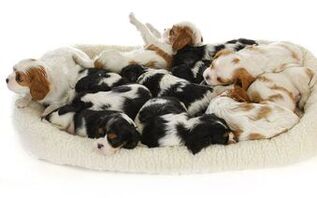 Many families choose to adopt from a neighborhood shelter or rescue; however healthy Cavaliers are frequently impossible to find since they are rarely surrendered. Once all other options have been exhausted in your search for a Cavalier puppy, it's time to determine what type of breeder you want to work with . . . Many people are asked if they want to work with a "reputable breeder" or an "ethical breeder," but they have no idea what those terms mean or how to tell what type of breeder you may have already spoken with. We've seen many poorly bred puppies sold to unwary purchasers for the same price as or more than well-bred pups, so our first tip is simple - price alone is not an indicator. We hope this blog post will assist you in identifying the breeder you want to work with, have already contacted or may have purchased a dog from. Even though we are aware that there are always exceptions to the rule, these three groups comprise the majority of breeders: 1. THOSE WHO CUT CORNERS FOR COST - Some breeders, often called "backyard breeders," - might not know any better. In contrast, others do know better but want to boost their profit margins by slicing costs associated with their breeding programs. These breeders can be recognized by their refusal to provide their dogs or puppies with any care that would be expensive. Breeders in this group frequently exhibit some or all of the following characteristics:
2. THOSE WHO OVERBREED - These breeders may come under Category #1 and overbreed their dogs as well (i.e., puppy mills), or they may present as respected breeders but overbreed their female dogs repeatedly to boost earnings. Always ask a potential breeder how many litters the female has had and how many she will have. These breeders often draw higher-quality buyers and have higher prices, but they disregard the best interest of the mother to maximize their profits. With regards to this particular breed, experts are in agreement that having more than four litters in a lifetime can be bad for the female's health and shorten her life. 3. BREEDERS WHO PRIORITIZE QUALITY OVER PROFIT - This is the gold standard in breeding and what the majority of customers are looking for. These breeders who don't have to breed their dogs to make money, they do it because they genuinely adore the breed or breeds and enjoy sharing them with carefully vetted families. Here are a few methods to recognize these breeders:
We hope that this blog post, together with our other resources, will assist you in identifying and locating the breeder you wish to collaborate with. Searching for the least expensive puppy, working with a broker or "rescuing a puppy" from the pet store are all risky propositions when purchasing a Cavalier. Should you need a referral to a breeder in your area, please check out our blog posts on recommended breeders or shoot us an email at JustALittleCavalier@gmail.com. 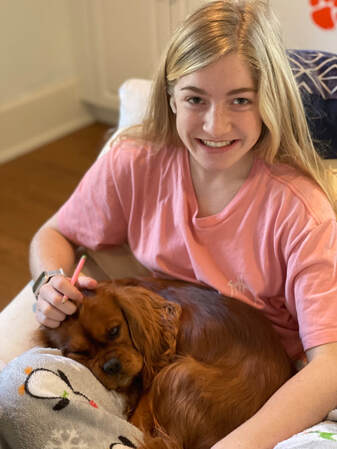 "Red Teddy" w/ his Guardian Family "Red Teddy" w/ his Guardian Family Most people don't feel comfortable buying a dog from a puppy mill or puppy store because of the parents' horrendous living conditions, forced breeding practices, and the fact that the puppy is not properly socialized before being purchased. The thought of breeders leaving theirs dogs in huge kennels has also lost its appeal to the majority of consumers. So, how do reputable breeders provide their breeding dogs with the best possible lives, while also maintaining diversity and high standards for their breeding programs? One solution is the use of Guardian Homes. This post will explain more about what it means to be a Guardian Home and contains a link to apply to participate in our program. How do Guardian Homes work? A male or female dog that will be used for breeding is simply placed in a home owned by someone other than the breeder. This aids the breeder in achieving numerous objectives:
What's in it for the Guardian Home? Guardian Families get a pick of the litter puppy without paying a dime. These programs frequently give retirees, those who can't afford the purebred pet of their dreams, or families who simply like puppies and are interested in breeding the opportunity to enjoy the benefits of breeding without the expenses, risks, and inconveniences associated with owning a kennel. To be a Guardian Home, there are certain standards that most reputable breeders will expect you to meet, such as:
We hope this blog post has provided more information about the use of Guardian Homes in breeding programs. If you live in the Charleston area and would like to be considered for our program, please fill out the online application here or send any questions you may have to JustALittleCavalier@gmail.com. 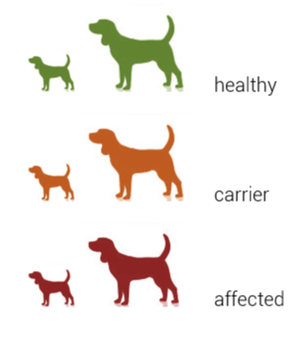 This post will discuss the importance of buying a puppy from a breeder who examines the DNA of their breeding stock and what to check for when given a copy of a DNA panel. We will discuss in a future post why you might think about DNA testing your own dog, particularly if you adopted, bought from a pet store, or acquired a puppy without checking the breeder's credentials. Many health issues that might affect Cavalier King Charles Spaniels can be financially and emotionally draining for their owners. The ability to detect dogs who were at risk of passing on major genetic problems wasn't available years ago, but that problem has been solved thanks to comprehensive DNA testing for dogs. In today's market, any trustworthy breeder should be able to talk to you about the role DNA plays in their breeding program, provide you with the results of any testing they've done and understand the potential impacts of DNA on your particular dog. This post will go over the fundamentals of determining whether a dog is genetically clear (healthy), a carrier (healthy but able to spread the disease to puppies) or impacted (unhealthy and will pass on the disease) before talking about specific genetic diseases that plague this breed. CLEAR - This is the benchmark: CLEAR. This canine is free of any genetic defects. As a result, they are not vulnerable to any diseases checked by the panel and do not possess any genetic defects that could be passed on to their offspring. Please note that a DNA clear dog is not clear of ALL defects, just those we can detect through genetic testing. Some issues in this breed, such as MVD (mitro valve disease) are not detectable by DNA panel. CARRIER - A dog containing one (1) gene for a genetic abnormality is called a "carrier." They can transmit the gene to their puppies, but the puppy won't exhibit the disease as they don't carry the two genes necessary to make them at risk. Thus, the gene won't affect them (they will never get the defect). There is a misconception among some consumers that carriers shouldn't be bred. Breeding carriers is safe, but they should only be bred with a dog that has tested negative for that condition so that none of the puppies are at risk. If we eliminated all carriers from our gene pool, we would cause more problems from inbreeding than we are solving by not producing gene carriers. AFFECTED - A dog who is impacted (or at risk) is one that contains two copies of the gene for a trait, making them susceptible to the disease. This dog can still be breed but only with a clear dog. However, it's not ideal, as all of their offspring will be carriers. Due to the likelihood that the dog would develop symptoms of the genetic disorder, you should avoid buying a dog that is affected by it. The diagram below helps put this information in context. Green is great. Orange is good. Red is a concern. 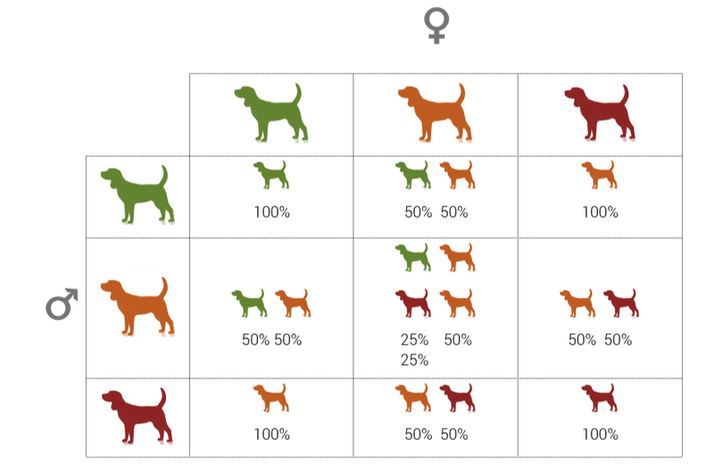 Knowing the differences between the clear, carrier, and impact can help you determine which genetic testing is crucial for this breed. A trustworthy breeder should test, at the very least, for the following things: CAVALIER KING CHARLES SPANIEL -
We get many questions about IVDD from our puppy purchasers as it relates to the Cavalier. We do not list that above because greater than 90% of all Cavaliers have IVDD. If you are interested in learning more about IVDD, please search "IVDD" on our blog to learn more. A trustworthy breeder cannot be created by DNA testing alone. Further breed-specific heart, eye, hip, & related testing must also be conducted and offered. Please go to our blogs on the OFA as part of your puppy search for more details on those tests. If you want to know more about DNA testing your dog before breeding or identifying any potential health issues, we highly suggest Embark because they handle all of our DNA testings and are a paid advertiser for our instructional content. Please read this post, which offers Embark savings and a sample Embark report. 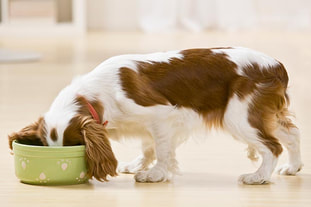 Daily, well-intentioned users of various Facebook forums will ask other well-intentioned users what they ought to feed their puppy. Then, members who are not veterinarians, breeders, or who have even read the contents of their own dog's food will advise prospective dog owners on what food to buy, typically based on what their dog "likes." Inevitably, more people will join in to express their disapproval of the decision to feed kibble in the first place, and by the time the discussion is over, I expect many group members will regret asking the question because they received more than 50 unhelpful responses. Please keep in mind that we are NOT veterinarians; however, we are very careful about what we feed our dogs. We converse with other breeders. We examine labels. We talk with our vets. We research dog food. We also don't judge other people's feeding choices as long as they do all they can to provide for their dogs. Every dog, every owner, and every breed is unique. Owners are advised to look into each of the following possibilities when deciding what to feed their new pet: 1. RAW FEEDING - Raw feeding is a divisive subject. Those who support raw feeding feel anything less is unacceptable. While we recognize the advantages of raw feeding, we also acknowledge that it may not be a feasible option for every pet owner. If seriously interested in raw feeding, we advise you to contact Dr. Judy Morgan to learn more, particularly for breeds related to Cavaliers. Here you can check her recipe for puppy loaf, a delicious introduction to feeding raw. The local specialized pet stores also offer raw options including brands we trust such as Answers, Primal Raw, and Instincts Raw, All of these are balanced and convenient raw options we have used to feed our dogs. These raw options are highly recommended and most dogs find them palatable and easy to digest. 2. HOME COOKED - Many new pet owners are unclear about the distinction betweenraw and "home-cooked," This term simply defines those who make their dog's food at home using items such as lean meats, veggies, and carbs, and "raw feeding," which is based on foods that are not prepared. It's simple to get this wrong. For instance, the puppy loaf that we discussed earlier, which can be eaten raw or cooked, would fit into both categories. However, preparing meals at home can be labor-intensive, expensive, and difficult (to make sure your dog gets all the nutrients needed). Having said that, our dogs adore home-cooked foods, which are particularly excellent for canines with certain dietary requirements or severe allergies. Dogs today also have the fantastic option of receiving "home-cooked" meals that have already been thawed and delivered to you. Our dogs are currently fond of Ollie, which we will cover in more detail in an upcoming post. 3. Kibble - Going back to the initial topic, people frequently wonder what kind of kibble they should give their dogs and it is by far the most popular option. Due to misleading packaging, recalls & low-quality ingredients, kibble has received a terrible reputation in recent years. Having said that, kibble has its place. For instance, we prefer to feed our dogs home-cooked meals & raw meals whenever possible, but we occasionally utilize kibble for training, stuffing Kongs, supplemental feeding during pregnancy, traveling, and handing over puppies to new homes. Here is how we suggest you choose a kibble for your puppy:
2. Blue Buffalo Life Protection Puppy 3. Orijen Puppy 4. Victor Purpose Nutra Pro (Suitable for dogs & puppies) 5. NuLo Freestyle Puppy & Adult Small Breed (Grain Free) 6. Diamond Naturals Small Breed 4. Visit your neighborhood specialty pet store. Yes, they can occasionally be more expensive, but they also offer excellent advice (speak with the owner or a knowledgeable employee) and frequently have free samples of the food available for your dog to taste before committing to a large bag. In order to compete with Amazon, Chewy, and other online retailers, they also offer rewards and loyalty programs that frequently lower the price of their food. Dog food is ultimately a personal decision dependent on your dog, your schedule, and your money. Don't leave that decision in the hands of strangers who have little or no understanding of any of those things.  Covid has left many people are searching for a new puppy for various reasons such as having more time at home to train them, feeling lonely, wanting to do something for their children, or experiencing general depression. They seek the companionship and loyalty of man's best friend! The desperate hunt for a new dog started the first week of March, and there are still loads of new posts on Facebook forums daily. However, there are a limited number of puppies from reputable breeders and those starting their search now are falling victim to scams. Desperation, low supply, and high demand lead to numerous issues including: • Panicked shoppers desperate for a puppy. • Rising costs that have made healthy puppies unaffordable for some households. • The impatience and annoyance of customers who find it difficult to comprehend why there aren't any puppies available. • Exhaustion & frustration from breeders who have nothing more to offer. Around Christmas, the exact same thing takes place. Now you see why this is a perfect storm for two types of people who benefit:
Here are some precautions you can take:
As I've repeatedly mentioned on this page, I don't expect you to rely on my statements regarding any subject matter - I encourage you to conduct your own research. In case you are skeptical about the existence of puppy scams in your area, here are some references covering regions from the east coast to the west coast. Better Business Bureau Report on Covid Puppy Scams North Carolina Department of Justice Puppy Scam Alert Three Oaks Farm Christmas Puppy Scam in Charleston Concord News Article on Current Puppy Scams Please take precautions. Please check the shelters in your area, as pets are given up every day due to job loss and other problems. Please choose one or two breeders you trust and join their waiting lists; Before you know it, the ideal puppy will be yours! |
FTC DISCLOSUREThis blog contains affiliate links. I may earn commissions from qualifying purchases made from links on this blog. We do not recommend any products that we do not purchase and use for our dogs. Categories
All
Archives
April 2024
|
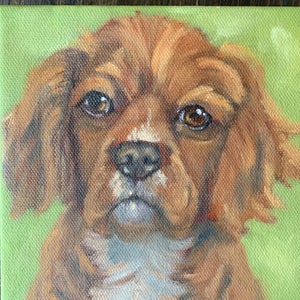
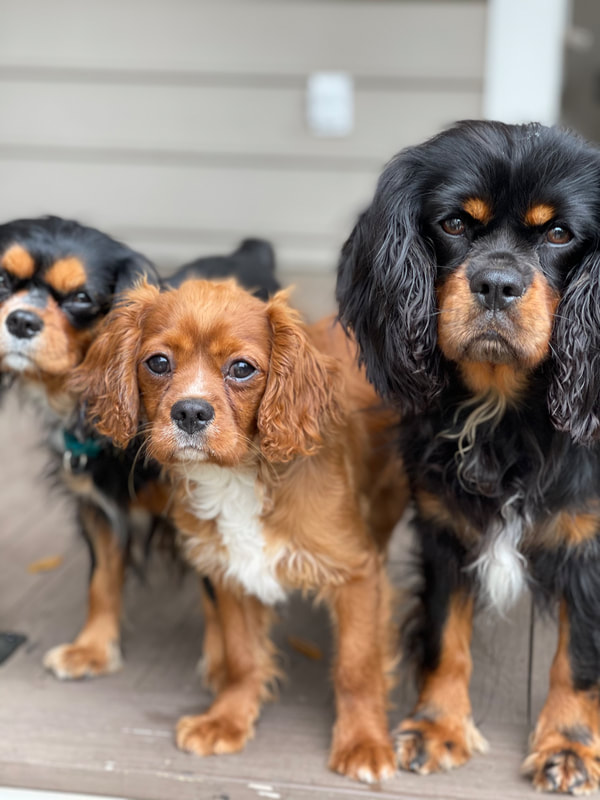

 RSS Feed
RSS Feed